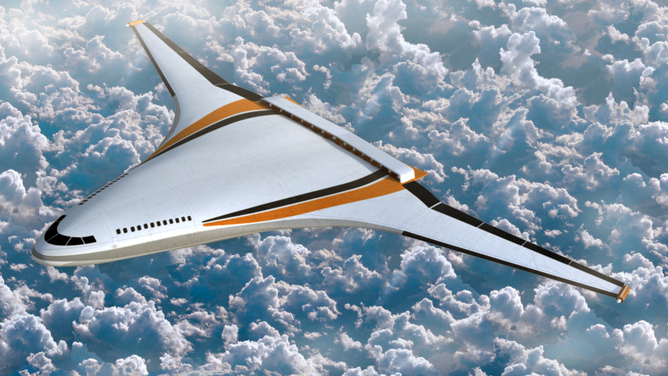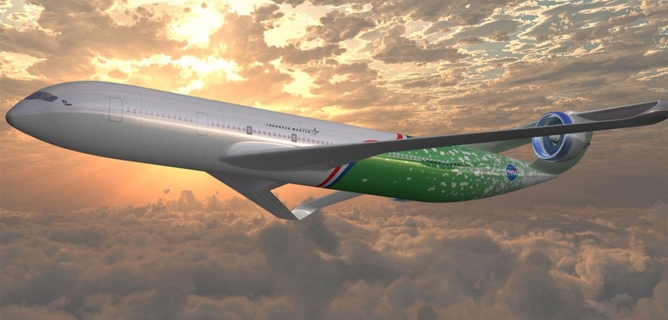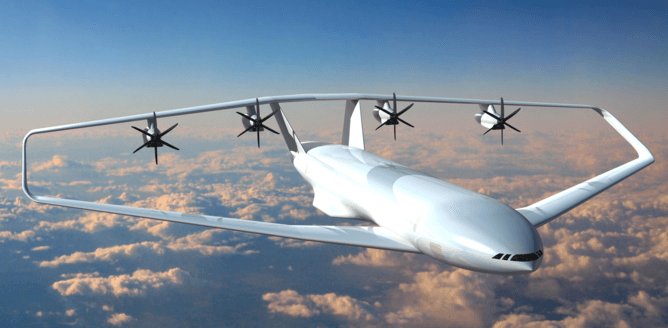By 2050 the aircraft industry will be much different than it is today. The predicted seven-fold increase in air traffic will bring a four-fold increase in greenhouse gas emissions, unless significant changes are made. But how drastic will these changes need to be in order to prevent this issue and how will they affect today’s aircraft that cruise through the skies every day?

The airliner is about to be re-invented. Shown above is an aircraft with a blended wing body. Image via space.com.
The next big step towards ensuring a greener aircraft industry is the full electrification of commercial aircraft. That means zero CO2 and NOx emissions, with energy sourced from power stations that are sustainably fueled. In this case, the main technological barrier is to overcome the energy density of batteries, a measure of how much power can be generated from a battery of a certain weight. Because practical lithium-ion batteries are now capable of 300Wh/kg, it isn’t far-fetched that they will hit 400Wh/kg in the coming decade.
Due to the drop in the cost of solar panels, harnessing energy from the sun is now the cheapest form of power in most U.S. states. By 2025, we’re looking at what’s predicted to be a 70% reduction in the cost of lithium-ion batteries, and with the rapid rise seen in the cost of kerosene-based jet fuel, this concludes that there will be a growing disparity in the costs of running aircraft that will favor electrification.
Even though a biofuel-kerosene jet fuel blend was certified back in 2009, the aircraft industry is not in any rush to make big changes just yet. This is due to the minor technological hurdles around scaling up biofuel production to industrial levels, but the main issue is price, since parity with fossil fuels is still about 10 years away.
By now, aircraft design templates are a century old, but technology has since moved on. We no longer need to build wings as rigid structures with discrete control surfaces, but can instead turn to the natural world for inspiration. Although it may seem like it to some, the aircraft industry has certainly not been idle. Have a look at the designs of the future below.

Airbus 2050 concept plane. Image via Airbus.

Electric aircraft. Image via NASA.

Prandtl Plane air freighter. Image via University of Pisa.
Ideas? Thoughts? Let us know — leave a comment below.
Story via space.com.
Advertisement
Learn more about Electronic Products Magazine





